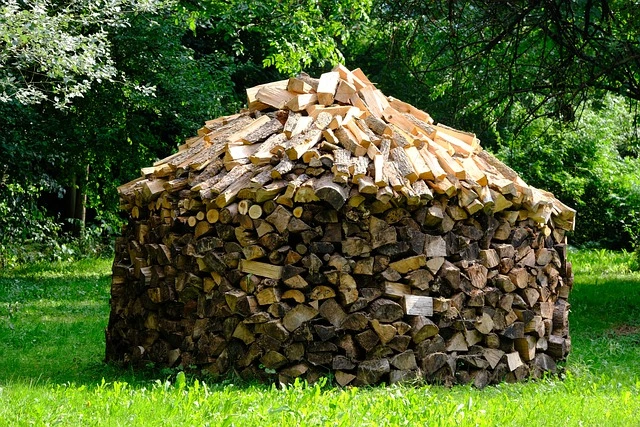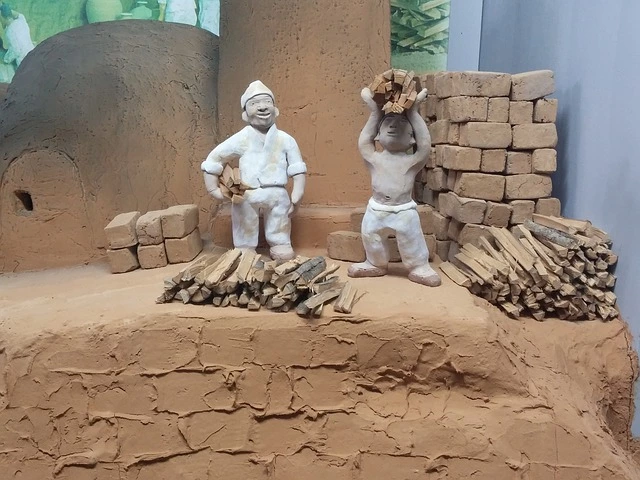If you are flirting with carving kiln-dried wood, you are not alone. It is one of the most commonly used materials in the woodworking world. It’s a great alternative to greenwood because it’s a relatively soft wood with a fine surface and is easy to work with.

What is kiln dried wood?
Kiln-dried wood type is a wood type that goes through the drying process in a kiln. The process is so effective that it dries out logs quickly. This method takes four days and a week to dry the wood. The process sucks the moisture from the wood, unlike seasoning, which happens over three years. It takes that much time since the wood naturally releases its moisture.
Kiln-drying kills insects during the process, requiring little stacking space compared to season wood. With kiln drying, the moisture content comes to a specific level, and Kiln-dried lumber tends to be a little weaker compared to air-seasoned wood.
Knowing about Kiln-dried lumber starts with a device called a kiln. A kiln is an oven used for wood and pottery. Although it is a closed oven, it allows some air to escape. It runs at a low temperature, and operating at high temperatures leaves your wood at risk of burning.
Since the tree has a large amount of water, it has to lose a certain percentage. However, you cannot lose all of it because it becomes brittle. Wood must be able to bend instead of breaking to a certain extent. The standard moisture content of kiln-dried wood is 13-19%.
Why Kiln-dried wood?
No matter how much you dry the wood, it remains natural. It comes with less moisture which makes it clean. Kiln-drying kills insects during the process, and that makes sit safe. The wood creates more heat and a cleaner burn. Gethe lumber whenever needed, eliminating the need to store large amounts. With the increase in online suppliers, kiln-dried logs are always available.
Is kiln-dried wood suitable for carving?

Yes, kiln-dried wood is good for carving. However, it is harder to carve and a little more brittle than that air-dried wood. That is due to the lower moisture content in the wood. Once it is out of the kiln, it slowly absorbs moisture and becomes easier to carve.
It has a uniform texture that makes it easy to carve once you get used to it. Drying wood in a kiln is a commercial practice that quickly produces wood for carving, reducing the drying time from years to days.
Try to pick some quality lumber to get started. Look for wood with an even and fine wood grain that is easy to carve with. Make it soft enough for wood cutting tools and hard enough to hold fine details.
Most woods are better to carve dry. However, dry wood is harder to carve, and there are higher chances of cracking since it does not hold moisture, making it a better state of wood for carving.
How to carve kiln-dried wood
Soaking kiln-dried wood first in a bucket of water for 30 minutes or more hours makes it softer, and that makes it easier for you to cut through the wood, and the wood has to be covered by water for an even soak.
Keep checking the wood’s softness every 30 to 60 minutes not to get too soft and saturated. When it becomes too soft, it starts deforming when cutting and will not hold detail very well, and soaking wood makes it expand due to water absorption.
It increases weight. However, the process has its shortcomings. When the wood starts drying, it cracks, starts to warp, and deforms. Deformation takes place when it gets too soft. Start by cleaning off and sharpening the carving tools of your choice. They have to meet the conditions of your dried wood.
Choosing a Carving Tool for kiln-dried wood
If you cannot use kiln-dried woodcuts in panels, you should consider choosing the best carving tool for the project. The softness of the wood determines the carving tool needed. Pay attention to the quality of the wood chisel for precision.
Remember that carving with hand tools like knives and chisels is difficult on the hardwood. Use bench carving knives for better results for smaller pieces and intricate details. Chip carving knives are easy and quick, and Whittling knives are comfortable.
Difference between air dried and kiln dried wood
- Air Drying Wood has no internal tensions baked into the wood compared to kiln-dried wood.
- Kiln-dried wood is more fragile and breaks off easily than air-dried wood. It chips when working with hand tools.
- Kiln-dried wood often loses about 20% of its color, whereas air-dried wood does not. The kiln’s high temperature removes the subtle colors of the wood grain.
- Kiln-dried lumber is kept in a fully climate-controlled environment once it comes out of the kiln, whereas air-dried wood is not affected.
Power Carving
Power carving is a woodwork process that involves cutting and shaping wood using power tools. It is fast and ideal for hard, knotty, and difficult grain. There is no need to pay close attention to grain direction since the chances of cutting yourself are low.
Power carving makes noise, although it is smooth. However, it raises lots of dust. Make sure you wear a dust mask or respirator and eye protection. Power carvers use grinders, angle grinders, and all types of sanders. Some even use micromotor machines or ultrahigh-speed air-turbine tools for detail work.
Hand Carving
Hand carving is a process that involves using hand tools, and it can be the most affordable carving method depending on your choice of wood and tools. Stick to softwood when using hand tools since it takes more effort from the user.
Working on softwood requires little or no pressure. Consider woods with little grain, no knots, and deformities. Carving against the grain using hand tools is challenging. Amongst the hand tools are the carving knife, chisel, and mallet.
Sanding
- Sand the surface with medium-grit sandpaper.
- Large projects require the use of an electric sander or sanding block.
- Smooth out blemishes. A smooth surface gives you a clear coat. Sand again with fine and extra fine-grit sandpaper.
- Get rid of the dust using a shop vacuum.
- Wipe down the surface with a damp cloth with mineral spirits.
Can you rehydrate dried wood for carving?
Rehydrating dried wood is done by soaking it in water or spraying its surface with isopropyl alcohol. The process is also known as rubbing alcohol. It had to be done only to soften up even the hardest of age-dried woods, but over-soaking leads to deformation.
Should you wait for the wood to dry before carving?
It depends on the type of wood and the project you are working on. However, carving wet wood is allowed. It is easier than carving it dry due to the moisture in the wood, allowing the knife to glide through the wood more easily. If the wood is too dry, the wood can be hard and brittle. That is why it gets soaked for carving, and the question is, why soak wood when you can carve it wet?
- Grain and Sheen: Teak Oil versus Danish Oil Uncovered - January 10, 2024
- The Cherry on Top: Crafting the Perfect Cutting Board - January 9, 2024
- Polyurethane Water-Based vs Oil-Based: Choosing the Right Finish - January 8, 2024